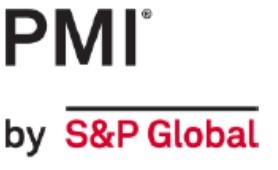Publishing schedules mean that we don’t have all of the data, including the global summary, for the March Purchasing Managers’ Index (PMI) for manufacturing which are being released throughout today – the countries in the Americas will be available this afternoon and India’s figures are released on Monday. It is worth noting that this is the first set of survey results since Russia’s invasion of Ukraine.
The UK manufacturing PMI fell to its lowest level for 13 months but, at 55.2, it does, at least in theory, point to continued expansion in the sector. Both output and total new orders expanded at a slower pace during March than they did in February, with the latter being held back by a second successive fall in new export orders. While not showing in the index (because longer deliver times are interpreted as expansionary), there is some encouragement in that suppliers delivery times continued to ease although they are still longer than “normal”. In a theme that we will see repeated in other countries, it is not just the Russia-Ukraine war that is restricting growth with respondents also citing supply shortages, greater caution among clients and inflationary pressures as constraints.
The manufacturing PMI in the Euro-zone also fell – in this case to a 14-month low at 56.5; again the Russia-Ukraine war is noted as a major issue but an increase in supply chain pressures resulting from the Covid-related shutdowns in China is also increasing lead times in Europe. This has held the Euro-zone PMI at a higher level than might otherwise have been the case; The rate of growth in output and total new orders slowed, the latter not helped by a fall in export demand for the first time since June 2020 amid anecdotal evidence that intra-European trade was affected by the war in Ukraine.
Within the region, Austria and Ireland recorded a higher PMI reading than in February although for slightly different reasons; in both cases the index was inflated by lengthening suppliers delivery time, helped in Austria by an acceleration in output growth and strong employment, while in Ireland new orders were also a part of the rise ion the overall PMI. The other Euro-zone countries covered by the report all saw a significant fall in their manufacturing PMI.
There was also a general fall in the manufacturing PMI in the other European countries that we monitor, although both Hungary and Switzerland managed to record an improvement on the February reading. Poland, Czechia and Sweden saw their PMI reading fall month-on-month (in a decreasing order of magnitude) but remained above 50 which points to expansion in the sector – again, the lead times indicator plays a part in falsely inflating the index. Turkey also saw a modest reduction in its manufacturing PMI which, in this case, took it back into negative territory at 49.4 with slowdowns in both output and total new orders (although export orders increased, helped by a favourable exchange rate). Inevitably, there was a sharp fall in the reading for Russia which took it further into negative territory.
In Asia, there was an increase in the PMI in Japan as output returned to growth and total new orders accelerated despite being held back by a fall in export orders with firms reporting that demand was held back by the lockdowns in parts of China and the Russia-Ukraine war. Elsewhere in the region, the manufacturing PMI fell in Taiwan, South Korea and the ASEAN group of countries but remained above 50 (helped in most cases by lengthening delivery times); however, China also saw a lower PMI than in February and at 48.1 it is firmly back in negative territory with their lowest reading since February 2020 as Covid restrictions caused output and new orders to fall and to outweigh the effect of longer delivery times in the index calculation.
Among the countries we have the March data for, the highest PMI was recorded in Switzerland (64.0) and the lowest in Russia (44.1); the most significant improvement compared to February was in Hungary while the largest reduction was, not surprisingly, in Russia.
Finally, a reminder that the manufacturing PMI is a composite index calculated by weighting the trends for five factors – total new orders (30%), output (25%), Employment (20%), suppliers delivery times (15%) and stocks of purchases (10%). It is important to remember that the delivery times metric is inverted so longer delivery times add to the index because they are regarded – falsely during the pandemic – as a sign of increased activity rather than as a constraint.
The S&P Global PMI reports for major economies around the world are available from their web-site at https://www.markiteconomics.com/Public/Release/PressReleases and our summary charts report is available to download below (we will update this later today with the data for the Americas). You should note however, that the PMI readings for Hungary, Sweden and Switzerland are compiled independently and not on this site but they can be found with an appropriate internet search.

